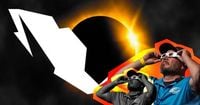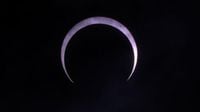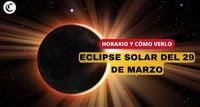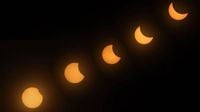On Saturday, March 29, 2025, skywatchers across the northern hemisphere will be treated to a spectacular astronomical event: a partial solar eclipse. During this phenomenon, the Moon will partially obscure the Sun, creating a stunning visual display for observers in various regions, including parts of Europe, Asia, Africa, North America, and northern South America, as well as the Atlantic and Arctic oceans.
According to NASA, the eclipse will commence globally at 4:50 a.m. ET, peak at 6:47 a.m. ET, and conclude at 8:43 a.m. ET. In the United States, the eclipse will be visible primarily in northeastern states like Maine, Massachusetts, and New York, as well as in Canadian cities including Montreal, Ottawa, and Halifax. For many, this will be a rare opportunity to witness a celestial event that is both beautiful and awe-inspiring.
Specifically, the timing of the eclipse will vary based on geographic location. In Mexico, for instance, the eclipse will begin at approximately 4:30 a.m., reach its peak around 6:00 a.m., and conclude by 7:30 a.m. local time. States such as Coahuila, Chihuahua, Sonora, Durango, and Nuevo León are expected to experience the most significant darkening, with up to 40% of the solar disk covered by the Moon.
In the U.S., the eclipse will unfold as follows: in Baltimore, Maryland, it will start at 6:55 a.m. and end at 7:02 a.m.; in Boston, Massachusetts, it will begin at 6:31 a.m. and finish at 7:07 a.m.; in Buffalo, New York, the visibility will be from 7:02 a.m. to 7:09 a.m.; and in New York City, the eclipse will occur from 6:44 a.m. to 7:04 a.m. Washington D.C. will see the event between 6:56 a.m. and 7:01 a.m.
For those in South America, the only location where the eclipse will be visible is Paramaribo, Suriname, where it will occur between 6:40 a.m. and 6:47 a.m. In Europe, the eclipse can be observed from Madrid, Spain, starting at 10:48 a.m. and concluding at 12:33 p.m.
Watching a solar eclipse is a thrilling experience, but it's crucial to do so safely. Looking directly at the Sun can cause severe eye damage, including blindness. During the total solar eclipse of 2017, a young woman suffered solar retinopathy after observing the eclipse with glasses that did not meet safety standards. To prevent similar incidents, experts recommend using certified eclipse glasses or a handheld solar viewer that meets the ISO 12312-2 safety standard.
Regular sunglasses do not provide adequate protection, as they do not block harmful infrared radiation. Eclipse glasses are made of a special polymer or resin that blocks nearly all visible, infrared, and ultraviolet light. If you wear prescription glasses, it is advised to keep them on and wear the eclipse glasses over them, or use a solar viewer in front of your glasses.
For those interested in observing the eclipse through telescopes or binoculars, it is vital to ensure these devices are equipped with a solar filter. Looking through any unfiltered optical device while wearing eclipse glasses can lead to serious eye injuries, as the concentrated solar rays can penetrate the glasses or viewer.
As the date approaches, many are gearing up for this celestial event, excited to witness the beauty of the universe. Astronomers emphasize that eclipses are not just visual spectacles but also serve as reminders of our place in the cosmos. “Watching an eclipse is a reminder of our cosmic insignificance,” they say, highlighting the significance of such events in sparking curiosity and wonder.
As March 29, 2025, draws near, communities are encouraged to gather for safe viewing parties, where families and friends can come together to enjoy the eclipse. Educational institutions and astronomy clubs are also planning events to help the public understand the science behind this astronomical phenomenon.
Whether you are a seasoned astronomer or simply curious about the night sky, the partial solar eclipse on March 29 promises to be an unforgettable experience. Mark your calendars, prepare your eclipse glasses, and get ready to witness a moment that connects us all to the vastness of the universe.
For additional information on where and when to view the eclipse, be sure to check local resources and astronomical societies. They can provide specific details tailored to your location, ensuring that you don’t miss this extraordinary event.








